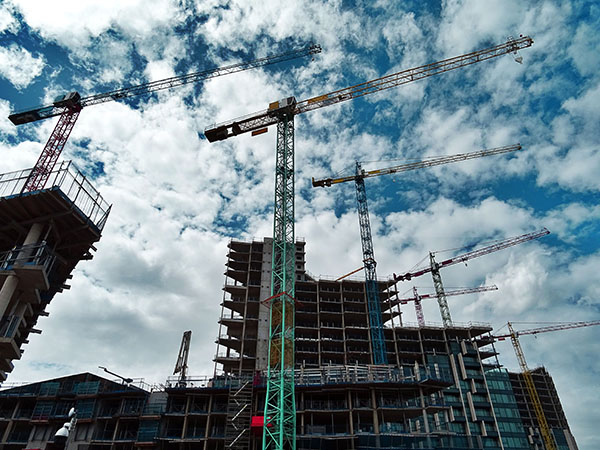Commercial Construction Defects
Construction defects are defined by Texas law as poor workmanship in a project’s design. It can cause structural failure, damage to property or person, and financial harm to several parties.
Standard of Care
All parties in a given project, including architects, electricians, carpenters, and laborers, are expected to adhere to stringent guidelines and safety regulations established by the construction industry and governing bodies. Failure to do this can result in legal repercussions, with the contractors and their teams being held accountable for any resulting issues or disasters. This is the legal standard of care that the state sets for the construction industry.
Breach of Contract
When filing a breach of contract claim against builders in Texas, plaintiffs have to prove that a product different from the one promised in the contract was delivered. In general, they must file the claim within four years of execution of the contract. However, an exception exists if the defect is only discovered years after moving in; in this case, the time for filing starts when the defect is found. It is worth mentioning that the filing of a claim may qualify as a “statute of repose,” which would grant a period of six years to file the claim, even if the defect was not discovered immediately.
Builder Negligence
Despite builders acting with the utmost transparency and conscientiousness, construction defects can still occur. It might be challenging to keep track of what the contractors are doing, and if something does go wrong, there is legal recourse. Construction defects are not always visible right away; they could take some time to reveal themselves. For instance, poor quality building materials that disintegrate over time is a great example. To be able to file a claim, an expert in construction must be called to testify and give evidence that the structure’s integrity was compromised due to bad initial design choices, and that the builder did not meet the standard of care, leading to either economic or personal damage.

Types of Construction Defects
Construction defects refer to any and all deficiencies in a building project that can stem from a variety of issues such as improperly designed materials, poor workmanship, or failure to follow construction codes. Examples include but are not limited to:
- Defective architectural designs
- Lack of planning
- Lack of supervision
- Improper construction
- No inspection
Defects in property construction occur when there is a failure to construct the building in a reasonably workmanlike manner, or the structure fails to perform in the manner intended by the buyer.
Common Construction Defects
Some of the most common and high-cost construction defects include:
- Structural integrity — concrete, masonry, carpentry and unstable foundations
- Mechanical problems
- Electrical issues
- Water intrusion (which can result in property damage and toxic mold exposure)
- Lack of or defective thermal or moisture protection
- Doors, windows and glass seals
- Finishing defects
Categories of Construction Defects
Generally, courts categorize construction defects in one of four categories:
- Design deficiencies
- Material deficiencies
- Construction deficiencies
- Subsurface deficiencies
Design Deficiencies
Design professionals, such as architects and engineers, are responsible for the design and construction of buildings and systems. Despite their expertise, there can be design defects due to their work not adhering to the specified building codes. Examples of such defects include issues in the design of the roof that result in water penetration, intrusion, poor drainage, or inadequate structural support.
Material Deficiencies
The use of substandard building materials can lead to material deficiencies. These could include a leaking window, inferior concrete that cracks under pressure, deteriorating flashing, substandard building paper or waterproofing membranes, inferior asphalt roofing and installing drywall that is not approved for use in wet or damp areas such as bathrooms. Deficiencies like these can interfere with the performance and functioning of the material, even when it is properly installed.
Construction Deficiencies
Inferior workmanship can cause numerous issues in a construction project. It is not uncommon for inexperienced contractors to shirk their responsibility to meet code requirements, or to intentionally conceal damaging defects. Water intrusion through openings in the structure, such as windows, doors, or roof, is the most common defect. This can foster the growth of mold and may require additional repair. Apart from water intrusion, other construction defects may also arise, such as cracks in foundations, dry rot in lumber, electrical and mechanical problems, and plumbing leaks.
Subsurface Deficiencies
Various parts of the country have expansive soil conditions that can make it difficult to provide a stable foundation for buildings. Without a securely-laid foundation, cracks in the building may appear and other damage can affect the structure. Furthermore, if the soil beneath the building is not adequately compacted or prepared for drainage, there can be serious repercussions––subsidence, shifting or movement of the structure, and flooding may occur.
Commercial Construction Lawyer
Construction defect claims can be complex. They often also involve multiple parties and multiple insurance policies. Bringing a construction defect claim under Texas law requires understanding the complexities of the claim itself and the complexities of the insurance issues that can ultimately provide the source of recovery.






